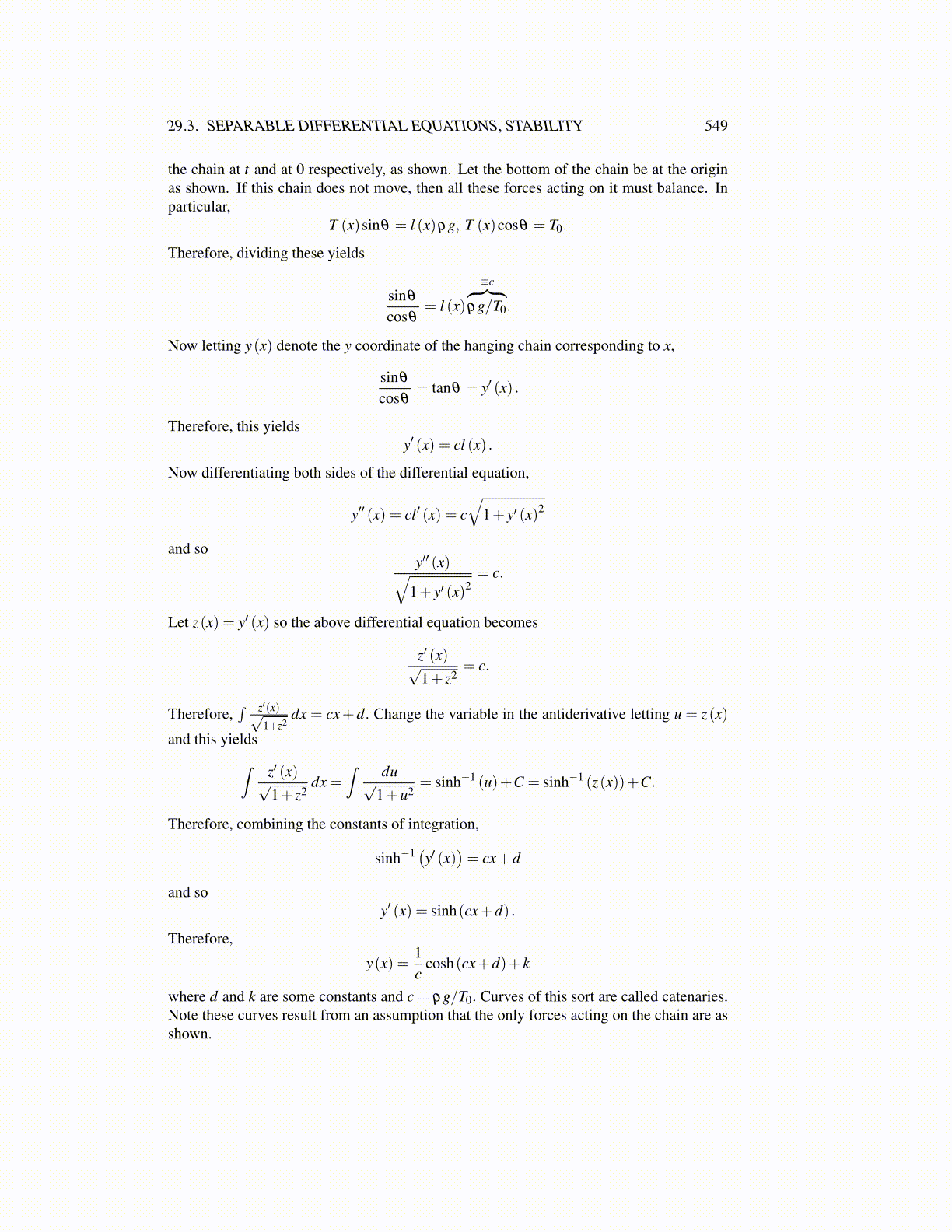
29.3. SEPARABLE DIFFERENTIAL EQUATIONS, STABILITY 549
the chain at t and at 0 respectively, as shown. Let the bottom of the chain be at the originas shown. If this chain does not move, then all these forces acting on it must balance. Inparticular,
T (x)sinθ = l (x)ρg, T (x)cosθ = T0.
Therefore, dividing these yields
sinθ
cosθ= l (x)
≡c︷ ︸︸ ︷ρg/T0.
Now letting y(x) denote the y coordinate of the hanging chain corresponding to x,
sinθ
cosθ= tanθ = y′ (x) .
Therefore, this yieldsy′ (x) = cl (x) .
Now differentiating both sides of the differential equation,
y′′ (x) = cl′ (x) = c√
1+ y′ (x)2
and soy′′ (x)√
1+ y′ (x)2= c.
Let z(x) = y′ (x) so the above differential equation becomes
z′ (x)√1+ z2
= c.
Therefore,∫ z′(x)√
1+z2dx = cx+d. Change the variable in the antiderivative letting u = z(x)
and this yields∫ z′ (x)√1+ z2
dx =∫ du√
1+u2= sinh−1 (u)+C = sinh−1 (z(x))+C.
Therefore, combining the constants of integration,
sinh−1 (y′ (x))= cx+d
and soy′ (x) = sinh(cx+d) .
Therefore,
y(x) =1c
cosh(cx+d)+ k
where d and k are some constants and c = ρg/T0. Curves of this sort are called catenaries.Note these curves result from an assumption that the only forces acting on the chain are asshown.